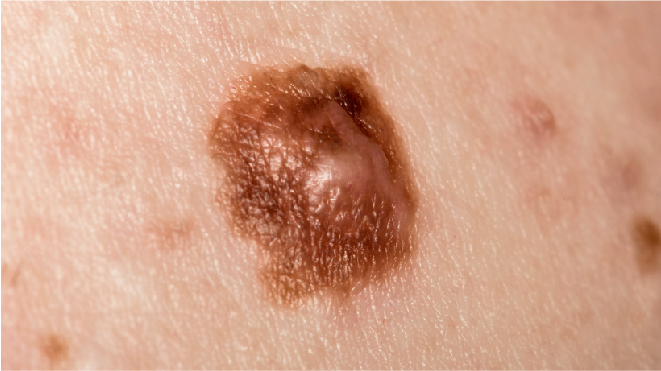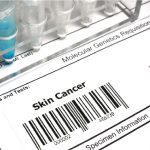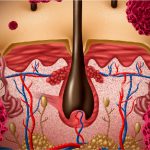Skin cancer can develop in any part of the body, but most often it is developed on skin that is more exposed to the UV radiation. Skin cancer occurs to people of all skin tones. Read more about skin cancer here.
What are treatment outcomes?
The expected result from a particular treatment is referred to as outcome. The stage and type of the cancer, type of treatment given, age, tolerance and overall health of the patients are the factors on which the outcome is based on. It varies for person to person too. The five year survival rate of the cancer, represented in percentage gives the number of patients who have survived the cancer with the anticancer treatments, is one of the metrics related to outcome. It is the number of patients who survived the cancer for more than five years, out of every 100 people diagnosed with it.
Treatment methods and their outcomes:
The following are the outcomes of the treatments used for skin cancer:
Chemotherapy:
Chemotherapy uses anticancer drugs to treat skin cancers. These drugs are prescribed to be given in cycles. After each cycle, to manage and cope up with the side effects, patients are given a rest period. These drugs are absorbed by the blood and virtually travel along with the blood in the body to reach all parts of the body and kill the cancer cells.
Chemotherapy is not the most recommended method to treat skin cancer. These drugs are also combined with other treatments for successful results. The five year survival rate of melanoma is between 20% and 92% depending upon the stage of the cancer, while that of merkel cell cancer around 60%.
Radiotherapy:
Radiotherapy uses high beams of X rays to treat skin cancer cells and tumours. This treatment aims in killing the cancer cells and restricting their growth. Radiotherapy has a very good success rate in treating skin cancer. Higher and precise dosage of radiation increases the effectiveness of the treatment.
Surgery:
Surgical procedures are the most recommended treatments for skin cancer. For localised skin cancers, surgical procedures alone are capable of curing skin cancer, while for advanced skin cancers, it is used as a part of the main treatment. The surgery basically involves the removal of the upper layers of the skin and the nearby tissues.
Photodynamic therapy (PDT):
This treatment uses a particular type of laser light to cure skin cancer. It is often given along with other drugs, which are inactive when until exposure to the laser light. These drugs are given intravenously or placed on the skin and get accumulated more in cancer cells than the normal ones. The major disadvantage of this treatment is the damage it causes to the healthy tissues.
Chemical peel:
This procedure is used to improve the appearance of the skin. It is carried out by applying a chemical solution on the affected areas that is absorbed by the top layers of the skin. They are often to treat actinic keratosis. Chemical peel are also referred as chemabrasion and chemexfoliation.
Targeted therapy:
This treatment uses drugs that target the cancerous cells. They avoid the extreme damage to the remaining healthy cells. As a part of targeted therapy, signal transductions inhibitor is used. These inhibitors block the signals that pass between molecules in the cells, which leads to death of those cells.
Immunotherapy:
Immunotherapy aims in making the patient’s immune system stronger by using artificial substances to restore the body’s defense against cancer. These drugs are often injected into the skin. This procedure is also known as biotherapy or biologic therapy.
Read more about treatment options for skin cancer here.
Survival rates by type and stage:
The survival rate usually refers to the five year survival rate that shows how many patients out of 100 live beyond five years after first being diagnosed by a specific cancer. It is an indicator to understand the outlook of the patient based on the type and stage of cancer.
Localised skin cancer has five year survival rate of 95%, while metastasized skin cancer has a 5-year survival rate of around 25%. The five year survival rates of different types and stages of skin cancer are:
Melanoma:
Though melanoma make up only 1% of the skin cancers that are diagnosed, they are the cause of most deaths due to skin cancer. The following are the survival rates of different stages of melanoma:
Stage I: In this stage, the cancer is confined to the skin only. It has not spread to any nearby lymph nodes. The stage I of melanoma has a five year survival rate of almost 97%.
Stage II: This stage of skin cancer might have spread to the nearby tissues into the dermis, but not beneath it. Stage II of melanoma has a five year survival rate of 92%.
Stage III: Stage III of melanoma is a metastasized form of cancer which might have spread to the deeper layers of the skin along with the distant lymph nodes and organs. Stage IIIA and IIIB are less dangerous than stage IIIC, with a survival rate of 78% and 59% respectively, while that of stage IIIC is 40%.
Stage IV: This stage of melanoma has spread to other parts of the body including the lymph nodes, lungs, liver, bones, or brain. These are the most advanced stages of skin cancer. The five year survival rate of stage IV melanoma is about 15% to 25%.
Non melanoma:
Non melanoma cancers are one of the most curable forms of skin cancer. 0-5% of the deaths due to skin cancer are because of the non melanomas. When diagnosed in the early stages, the five year survival rate of basal cell carcinoma is almost 100%, while those of squamous cell carcinoma is around 95%. Merkel cell carcinoma has a five year survival rate of 85%.
Follow up plan:
The patient has to monitor his/her health regularly, even after active treatment for skin cancer. They have to be monitored for any signs or symptoms of recurrent cancer, manage with the side effects of the treatments along with their general health. The following is the follow up care for skin cancer:
Developing a follow up care plan:
The patients are advised to develop a diet plan, plan for future appointments with the doctor along with the list of medical and physical examinations as a part of the follow up care plan. This not only helps the patients to strike back at their regular life, but also minimizes the risk of side effects and recurrent cancer. They are often recommended to fix appointments for every three to six months for the first five years and once a year after that.
Regular monitoring of blood cell count:
Blood transfusions may be required in case of lowered number of blood cells which is why it is advised to regularly monitor the patient’s blood count. For patients who experience lowered blood cell count, blood transfusions may be required.
Knowledge of risk factors:
People should always be aware of the causes and risk factors of skin cancer, so that they can take preventive measures in order to avoid the development of skin cancer.
Healthy diet as advised by a nutritionist:
The patients have to be very careful with what they eat by estimating their digestive tract acceptance. They are advised to eat fresh fruits and vegetables and whole grains. Food that are rich in calcium and vitamin D are recommended. Saturated fats and alcohol consumption must be avoided. The diet of the person post treatment plays a very important role in how smooth they can carry on with their daily activities. Hence talking to an experienced nutritionist could help.
Watching for recurrence of cancer:
Strict monitoring is required to check for any symptoms of recurrent skin cancer. In case the symptoms begin, next cycle of the treatment has to be started.
Keeping personal health records:
For the further diagnosis or treatment in the future, the patients are advised to maintain a detailed record of the medical history, which includes the previous treatments that the patient has been given for the skin cancer treatment in the past, along with his/her allergic descriptions.
Managing with the side effects:
Skin cancer treatments have a lot of side effects which could be very embarrassing to live with. Hence, patients are suggested to see a doctor immediately he experiences the side effects and get it treated to live a happy and long life.
Care to be taken:
The follow up plan also includes a proper after care for the patient to follow:
- Use SPF 30 or above sunscreens
- Wear sunglasses with UVA and UVB protection
- Avoid sunburns
- Tan beds or booths are strictly not recommended
- Avoid direct contact with sunlight
- Prefer covered clothes while going out in the sun
- Regular check-ups with the dermatologist
- Have meals healthy in vitamin D
- Stay hydrated
- Keep skin moisturized
- Take nourishment supplements
- Take anti sickness medication to prevent reduce weakness
- Consult a doctor on any reactions
- Avoid spicy food
- Quit smoking
- Avoid alcohol
- Self hygiene is very important




